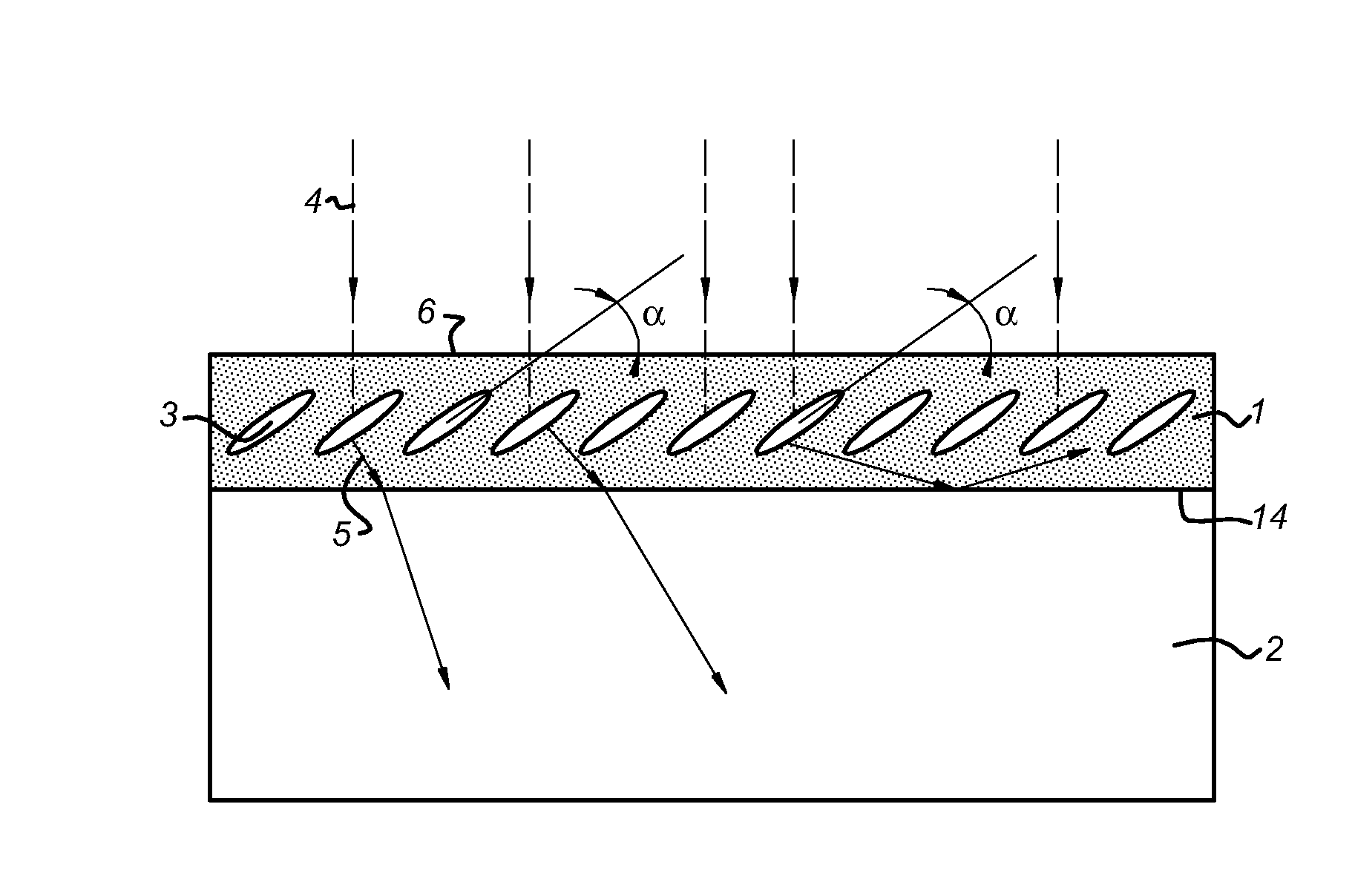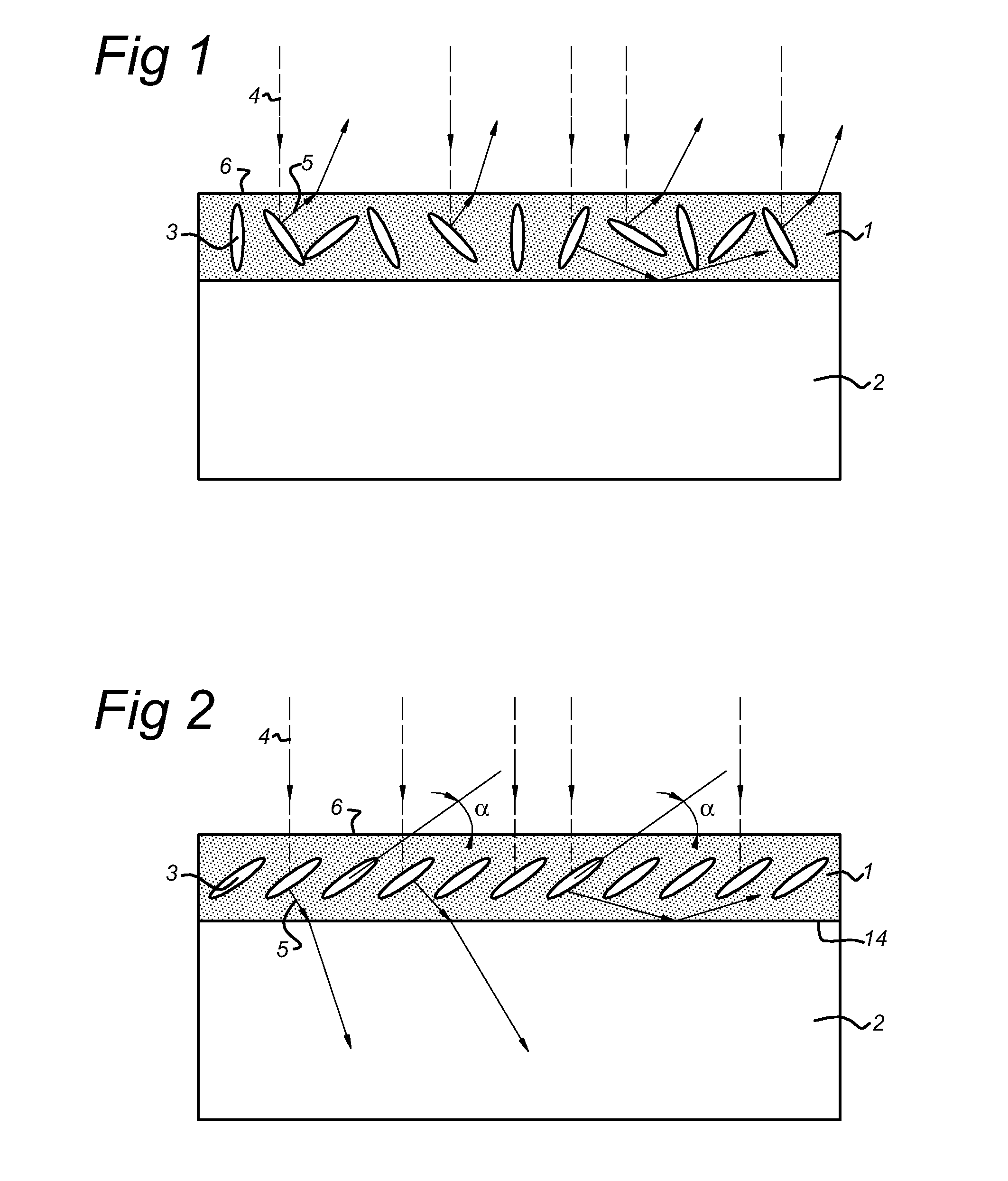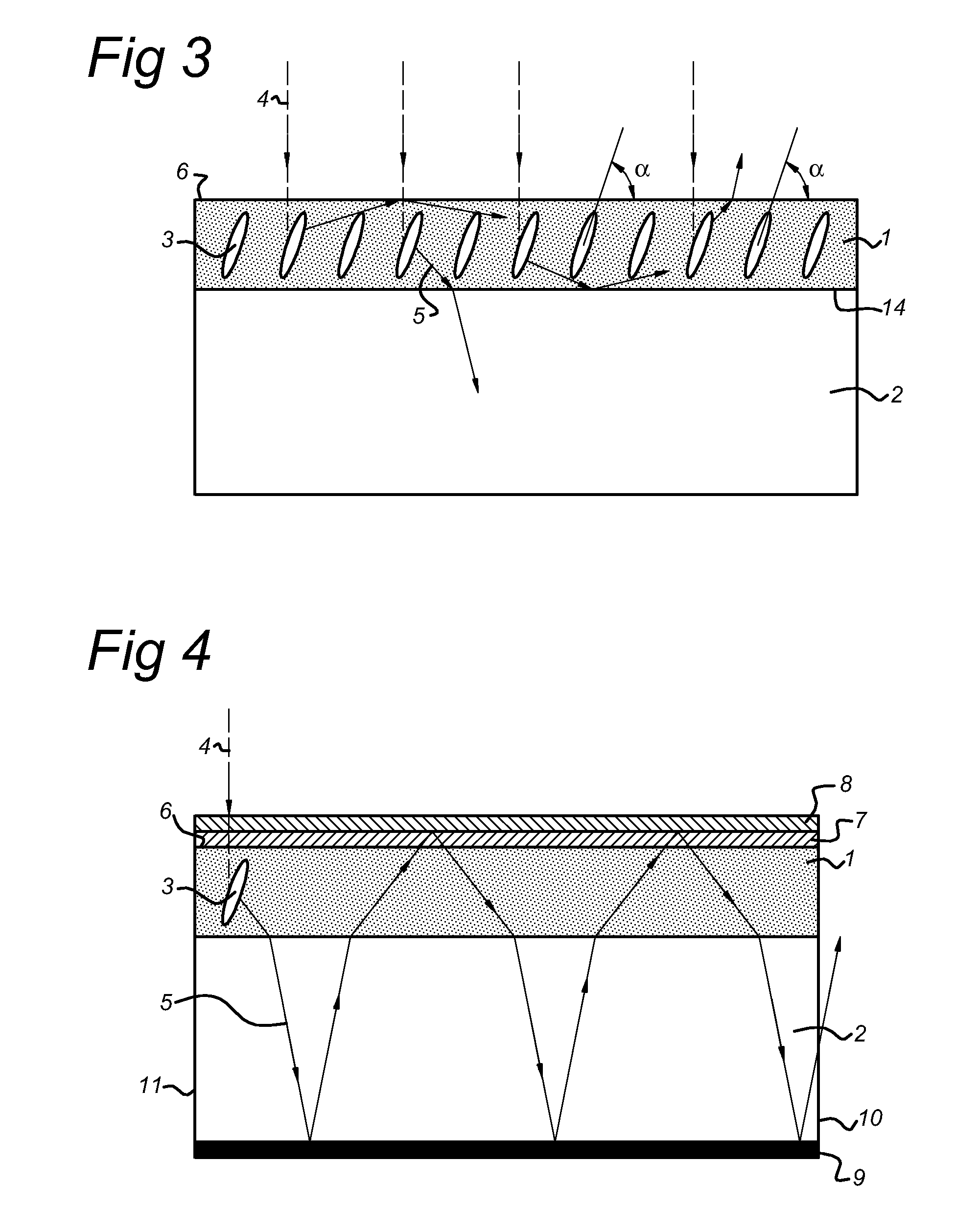Luminescent object comprising aligned polymers having a specific pretilt angle
a technology of aligned polymers and objects, applied in the field ofluminescent objects, can solve the problems of high investment cost, high maintenance cost, unwieldy shapes, etc., and achieve the effect of dramatically increasing the efficiency of lsc-systems
- Summary
- Abstract
- Description
- Claims
- Application Information
AI Technical Summary
Benefits of technology
Problems solved by technology
Method used
Image
Examples
example 1
Application of a Homeotropically Aligned Photoluminescent Polymer Coating
[0145]A homeotropic dye-doped liquid crystal mixture was applied to a clean 30 mm×30 mm×1 mm glass slide. The liquid crystal mixture was prepared by mixing an ethanol solution which contained 1 wt. % Irgacure 184 (ex Ciba Chemicals) and 1 wt. % Coumarin 30 (ex Aldrich Chemicals) together with a solution containing 50 wt. % RMM77 monomer and a 50 wt. % xylene in a weight ratio of 1:1. RMM77 (Merck) is a nematic homeotropic reactive liquid crystal from which the main components are the liquid crystals RM82 and RM257 (both Merck) and a homeotropic dopant. The mixture was stirred at 80° C. for 2 hours until all ethanol was evaporated. The xylene was evaporated by applying the mixture on the preheated waveguides (80° C.) for 10 minutes. After evaporation of the xylene a wet film was created with a 24 μm Meyer rod, resulting in an approximately 10 μm thick film. The samples were UV cured (λ=365 nm) under a N2 atmosph...
example 2
[0149]Example 1 was repeated except that first a polyimide alignment layer (Optimer A1 1051, ex JSR Micro) was spin cast onto the glass slide at 2000 rpm / s at an acceleration of 2500 rpm / S2 for 45 sec. After this the substrate was heated for 1.5 hours at 180° C. under vacuum. The alignment layer was rubbed with a velvet cloth to induce a planar alignment of the applied cholesteric liquid crystal. Next the homeotropic dye-doped liquid crystal mixture (this time using the dye DCM (4-Dicyanmethylene-2-methyl-6-(p-dimethylamino styryl)-4H-pyran (ex Aldrich Chemicals)) was applied to the opposite side of the slide as described in Example 1.
[0150]A 120 nm silver mirror was sputtered on top of the dye layer using a conventional sputter coater (Emitech K575X sputter coater, at a current of 65 mA for 2.5 min).
[0151]A cholesteric mixture was made by mixing 3.9 wt. % of a right-handed chiral dopant LC756 (ex BASF), 1 wt. % Irgacure 184 (ex Ciba Chemicals), 1 wt. % surfactant and 94 wt. % react...
example 3
[0164]Example 1 is repeated except that a liquid crystalline polymer is employed that is aligned at a tilt angle of around 30° using the procedure described by Sinha et al in Appl. Phys. Lett. (2001), 79 (16), 2543-2545.
[0165]Again the efficiency of the LSC is measured using the methodology described in Example 1. The results show that the efficiency of the LSC exceeds the efficiency of the LSCs described in example 1. This superior efficiency is believed to be associated with an improved incoupling of the emitted radiation into the waveguide.
PUM
 Login to View More
Login to View More Abstract
Description
Claims
Application Information
 Login to View More
Login to View More - R&D
- Intellectual Property
- Life Sciences
- Materials
- Tech Scout
- Unparalleled Data Quality
- Higher Quality Content
- 60% Fewer Hallucinations
Browse by: Latest US Patents, China's latest patents, Technical Efficacy Thesaurus, Application Domain, Technology Topic, Popular Technical Reports.
© 2025 PatSnap. All rights reserved.Legal|Privacy policy|Modern Slavery Act Transparency Statement|Sitemap|About US| Contact US: help@patsnap.com



